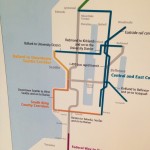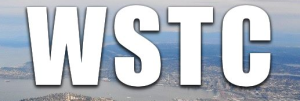6:30pm at High Point Neighborhood House, 6400 Sylvan Way SW. Here is the Agenda:
6:30 – Welcome and Community News
6:40 – Board Elections in May; click here for details!
6:50 – Committee Reports & Updates:
• Communications; Joe Szilagyi – Plan survey. We will need volunteers to work on developing an agenda and legislative survey for all of West Seattle. The purpose? To find out exactly what everyone really thinks is wrong with our transportation situation. To define and refine the goals of the WSTC. And, most importantly, to let West Seattle tell us where to aim our efforts.
• Action; Amanda Kay Helmick – Meetings with the Governor’s office to discuss mitigation money; Mayor’s office meeting.
• Research & Solutions; Kevin Broveleit; (Meets 1st Tuesday of the Month) – Discuss the Transportation Benefit District that the County is proposing as Plan B for King County Metro funding. Is it appropriate for us to be endorsing a vote either or way or just educating on the subject?
8:30 – 2014 To-Do List: Tackling our items for the year. This is based upon feedback from the Q&A Panel forum in January.
(B = Board Level tasks; C = Committee Level tasks)
Miscellaneous:
B: Identification of projects protocol — set up a procedure for the WSTC to fairly asses things “in our wheelhouse”.
B: Public forum 2 & 3 — we want to hold more events like January, with specific topics, or as debates.
B: Overlay Map — a map of areas and issues that we need to focus upon.
On Peninsula issues (issues specific within our boundaries):
C: Grant funds – for what projects should we pursue?
C: Bike trails through greenbelts to W Marginal — a way for people to get up to and down from us toward the city easily. Inspired by the John Wayne Trail through Snoqualmie Pass.
C-RS: Master Plan — our main “Transportation Master Plan” for the peninsula, as a guide to curate and present to officials of outstanding issues.
Peninsula egress issues (issues related to the access points to and from West Seattle):
C: 4th/6th or bus way to WS freeway — a replacement for the long ago taken 4th Avenue on-ramp.
C: Viaduct Mitigation money — Metro must decide in March if our specific 10% cuts go through in June.
C: Viaduct/SR99 response times — brought about by the terrible December 6 incident.
C: Lander Street overpass — it was already funded once but the money was shifted to the Mercer Project.
C: Light Rail/ST3 — lobbying and pressing for Light Rail here. Surveys have shown 90%+ support in West Seattle.
C: Should we have another way out? Literally–another bridge?
 Please join the West Seattle Transportation Coalition and the West Seattle Chamber of Commerce for a City Council Candidate Debate about our local issues. Hear about the issues, and meet the candidates! Please feel free to share this far and wide.
Please join the West Seattle Transportation Coalition and the West Seattle Chamber of Commerce for a City Council Candidate Debate about our local issues. Hear about the issues, and meet the candidates! Please feel free to share this far and wide.

